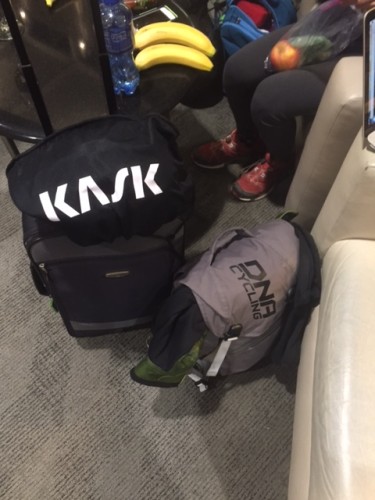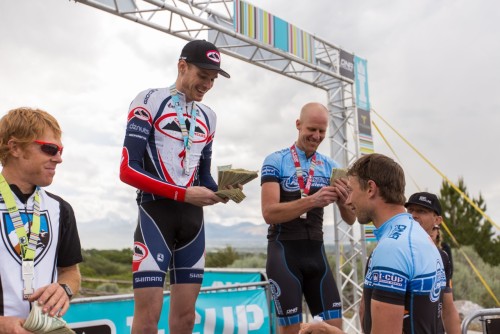Question: I notice the pros spend a lot of time pre-riding courses for really important races. What are you thinking about or focusing on as you pre-ride the course?”
Answer: Pre-riding the course at a big race is an important part of your race prep and can be the difference between a top ten and a podium finish. If done incorrectly it can also wreck your legs and end up making for a miserable weekend.
There are two ways to pre ride a course. The first is to do a mellow reconnaissance of the course at an endurance pace. This gives you your first look at the course and what you’ll be faced with on race day. This is an important lap and should not be done as a “social” ride with a large group of friends. Here are the things I do on my first lap:
- On this first easy lap you need to carefully analyze all technical sections. If you can’t ride something now is the time to stop and practice. Get these sections dialed and make sure you can ride them. And if you can’t, figure out the fastest way to walk/run and the best place to get back on your bike without losing any momentum. Remember it isn’t who can ride everything; it is who is fastest through everything whether that is on or off the bike.
- Look at the climbs. How long are they, how steep, are they technical and slow or smooth and fast? How will you attack each climb? Ask yourself if you have the correct gearing on your bike for the climbs. Make a mental note of where each climb begins so that in the race you are ready and in good position before each hill.
- Analyze the terrain and trail conditions. If it is super muddy and slick will you need to change tires? Is it super loose and rocky? Hard packed and fast? This might also determine the type of bike you ride on race day. If you know the course is going to be a total mud fest with lots of running you may choose to use a lighter hard tail with narrow tires then your full suspension.
- Check out the first kilometer of the lap. You need to know exactly when the first singletrack sections begins after the start/finish and is this first section slow and technical or fast and smooth. Do you anticipate a big bottleneck getting into the singletrack section? If so you need to figure out where you want to move up and in what position you go into that first singletrack.
- Check out the last kilometer of the lap. How does the course come into the finish line? If you are finishing the race in a small group how will you outsprint your competitors? Where will you make your big move?
- Know where the feed zone is, how long is it, how rough is the terrain, and figure out how many bottles you need to grab per lap.
Now you’re ready for a second lap of the course. I call this the “hot lap” and now is the time to start putting things together. The second lap should be done at a higher speed and intensity; maybe not true race pace but definitely a hard effort. You want to know how the course flows, what the corners are like and how the technical sections ride at speed. I like to go hard on my second lap because I want to see and feel what it is like to ride the lap with a high heart rate. Riding over a 3 foot drop is a heck of a lot harder when you are at race pace then when you are doing your casual reconnaissance lap. I don’t like to stop on my second lap, but if there is something that is giving you a lot of grief, stop and quickly work out a better line, practice once or twice, and then continue with your hot lap.
If the laps are really short, maybe 20-25 minutes, you can do your first lap easy, the second lap at tempo, and make your third lap your hot lap. And if the laps are really long and you can only realistically do one lap, then ride the first third easy, the middle third at tempo and the last third at race pace. This can be tricky because you don’t get to see the entire lap at a slow speed to work out any technical challenges.
The biggest drawback to pre riding the course is it can make you tired. Be careful and strategic with how and when you pre ride the course. Don’t do three hot laps on the course the day before the race because you feel amazing and you love the course and you’re just having too much fun. Come race day your legs will be trashed. Also don’t spend a ton of time trying to ride every technical section perfectly. If you have a long lap and you’re doing a slow pre ride, you could be out there over three hours. Sure you’ll know how to ride everything, but you’ll be so tired by race day it won’t matter. Pre ride the course just enough to learn the major technical sections, get a feel for the terrain, and figure out the best tires and tire pressure to use. That’s it. Be confident in your abilities and trust yourself that you’ll know what to do out on the course. Creating stress and anxiety over a course won’t do you any good and just leads to a miserable 24 hours before the race.
After every pre ride of the course I like to have a recovery drink as soon as I finish. I will write down important items before I forget them; tire choice, tire pressure, gearing, and bike choice. If you’re lucky enough to have a mechanic helping you, talk to him right away and let him know your thoughts on the course and what you’d like to do to your bike for the race. Then clean up, get some food, get out of the venue and get some rest. Race day is fast approaching!
Do your homework by pre riding the course, put together a solid race plan, and then relax and have fun. And then ride your bike like you stole it!
Happy trails!
Alison
Alison competed in two Olympic Games, won the UCI Mountain Bike World Championships, the UCI World Cup Overall, and is the holder of thirteen US National Championships in road, MTB, and cyclocross. Since retiring in 2005 Alison has been working full-time coaching cyclists and running skills camps and clinics. She is a USA Cycling Level I coach, a certified Professional Mountain Bike Instructor out of Whistler, BC, a Wilderness First Responder, a Colorado College graduate, and a very proud mom to her 5-yr-old son, Emmett. Alison is a Colorado native and lives in Colorado Springs with her family. For more information please visit www.alisondunlap.com





